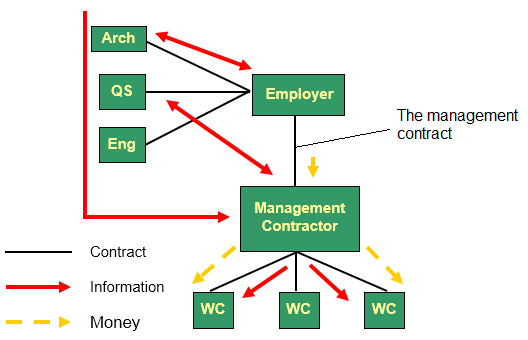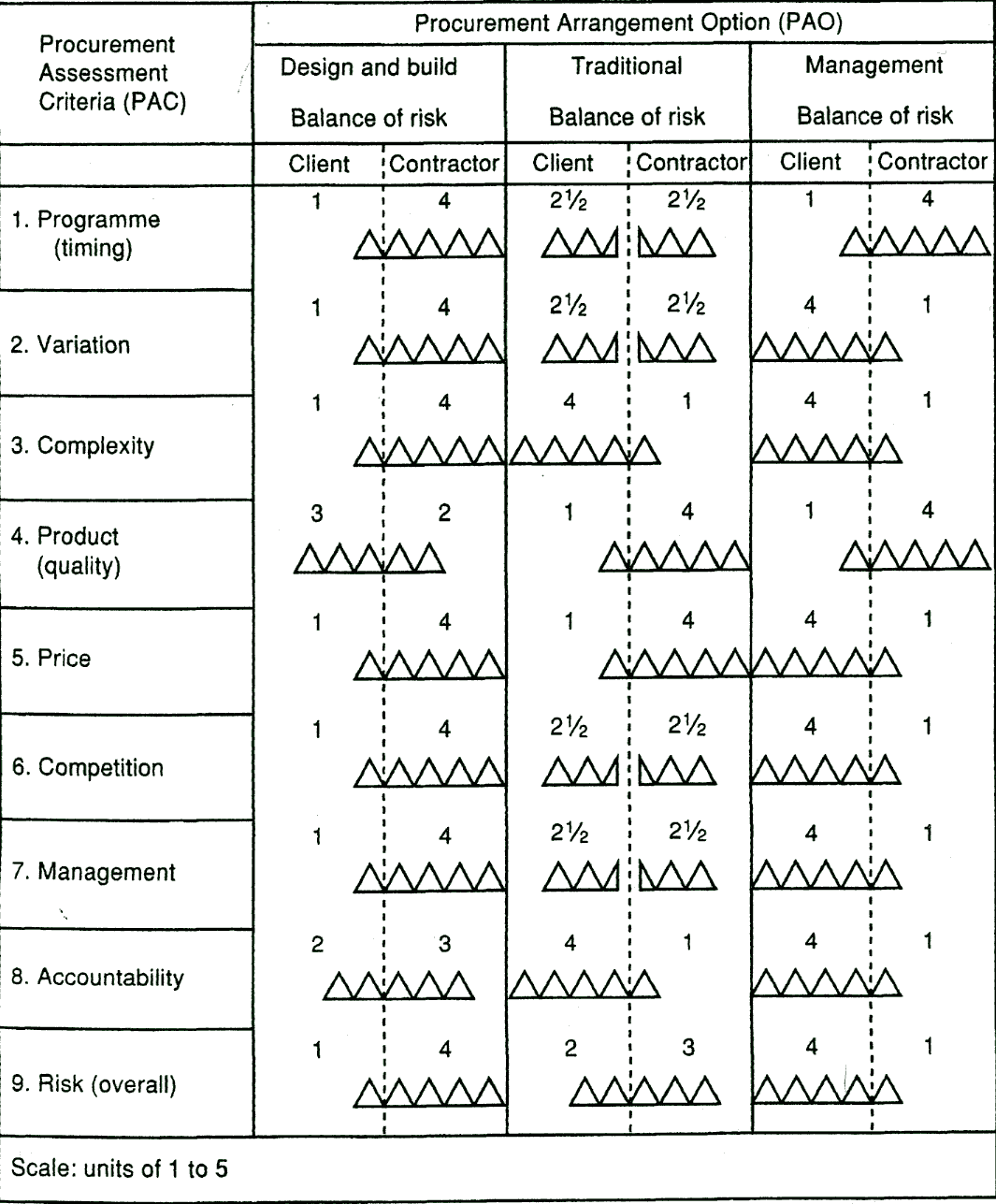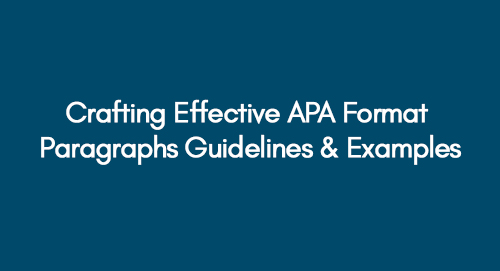
The Importance of Health and Safety in Today’s Construction Industry
January 12, 2021
Assessing the market stock forces in the Hartlepool area, in terms of supply and demand in relation to first buyers
January 13, 2021Executive Summary
A procurement system in construction projects can be defined as the process of obtaining goods or services in consideration of the project’s priorities and objectives.
Procurement in construction industry holds critical importance as it is the basis of constructions processes.
The procurement system does not only influence the construction contracts but plays a pivotal role throughout the project life cycle.
Therefore, all the project teams such as designers, consultants, contractors, suppliers etc. are all systematically integrated into a well-defined procurement system.
Therefore, the importance of procurement in the construction industry cannot be undermined.
You may also like to review the following;
The selection of an appropriate procurement system for a construction project is one of the most crucial decisions, as it can significantly impact the success of the project.
- The fundamental features that distinguish different strategies include;
- The proportion of risk assumed by each team
- The complexity and size of the project
- The availability of project information at the time the contracts are let
- The methods through which the contractor is reimbursed, and
- The interaction requirements between the design and construction phases of the project
There are many types and methods of procurement systems, which can also be tailored following the project and client requirements.
However, fundamentally there are 3 main methods of procurement systems in construction projects, which are;
- Management Contracting
- Construction management, and
- Design and management
Similarly, in the conventional procurement method, there are three types of pricing techniques, which are;
- Lump-sum contracts
- Measurement contracts
- Cost reimbursement
This research has been conducted to analyze these fundamental systems in terms of their implications, advantages and disadvantages.
The research then focuses on the optimum procedures that can be adopted for the selection of the most appropriate systems in accordance with the conditions, priorities and availability of the project information.
The procurement system in construction, therefore, is thoroughly analysed in this study.
The findings/conclusions related to the construction procurement strategy, as per the research conducted in this paper, can be utilized as a guide by the practitioners of the construction industry, to evaluate the most suitable procurement structure for specific construction projects.
Chapter – 1; Introduction
The increasing expectations of profits, sustainability, and durability along with optimum management practices have influenced the stakeholder of the construction industry to adapt to methodologies that can more effectively address the requirements of the construction business.
The dynamic nature of this industry involves various parameters that must be considered for optimum project management.
The most fundamental project parameters include project costs, time schedules, and completion of construction in accordance with the design and with high quality of construction (Watermeyer, 2010).
All these parameters are influenced by Procurement Management Techniques, which is the primary focus of this research.
Procurement in construction industry play a pivotal role in the successful completion of construction projects. Therefore it is vital to engineer and/or adapt to a procurement strategy that is precisely executed for a particular project, for all the phases of the project.
Construction management procurement systems incorporates/prioritizes the objectives of the project and outlines all the management processes involved during the complete life cycle of the project. It further establishes the responsibilities and scope of work of the teams involved and the associated risks assumed by these teams.
Any variations in the goals/objectives of the project or failure to achieve certain targets are considered to be potential risks, and these risks can have a significant impact on the purpose of the business of the client.
A well-defined procurement strategy can effectively mitigate these risks; as it balances the risk against the primary objectives of the project (Masterman, 2002).
This paper, therefore, aims to systematically investigate the factors that can influence the selection of procurement strategies and the respective considerations for implications. It further highlights what is procurement in construction and how procurement system in construction play its role in the development of projects.
These factors include;
- Client characteristics factors such as the profile of the client, level of control and knowledge of the client, risk allocation, primary requirements of the client, payment methods
- Project factors such as complexity/size of the project, quality, time and price certainty, project delivery methods, market competition and various other variables.
The details of the aims, objectives and significance are as below;
Primary Research Aims
The aims of this research are;
- Develop an understanding of the role of construction procurement strategies and the consequent managerial practices in construction projects. Moreover, develop an understanding regarding the importance of procurement in construction industry
- Identify how the implication of optimum procurement strategies in construction, both in contract and post-contract processes, can provide support in enhancing project effectiveness, productivity and performance
- Undertake investigations on the different types of procurement systems in construction projects, such as traditional, design and construct, integrated design bid and build, management and collaborative etc.
- After identification of various techniques and methods in this research, outline the advantages and disadvantages of each method
- Develop an understanding of how these procurement systems are implied in the construction industry while outlining the most considerable and influential factors; identifying why one procurement systems are likely to perform better as compared to other systems for a specific project.
1.2 Research Objectives
The primary objectives of this research are;
- Conduct an extensive literature review on procurement systems, outlining the key parameters that derive various forms of systems utilized in the construction industry.
- Carry out a detailed investigation of the impact and requirements of different procurement systems
- Explore methods and techniques for engineering an optimum construction procurement strategy; with the prime focus on construction projects
- Undertake investigations on the factors that can influence the strategic selection of the construction procurement process in the UK, with the purpose of providing guidance and assistance in selecting the most suited system of procurement for their specific projects
- Provide insight into an organizational method that can contribute as a reference to selecting the best possible procurement strategy in construction projects
There is a lot of economic and social significance of infrastructure. Infrastructure is planned to improve the living standard of residents and communities. It is helpful to maintain the rising living standard.
For successful economic growth and to meet the demands of an ever-increasing population, the best way is to ‘plan a well-managed investment’ in infrastructure (Gluch, 2009).
The project owners should be able to recognize the appropriate model and construction procurement method that fits the query in the project.
This can be achieved by carefully examining and analyzing the possibilities available for the project.
This will help achieve better monetary results and lower cost and time overflow since the risks will be tackled efficiently.
The goal of this research is to make the project owners and construction industry practitioners aware of the options that they have in making decisions regarding procurement strategies in construction projects.
The project owners should be following the steps provided in the guide for an appropriate procurement and construction strategy.
The strategy provides a complete delivery model that constitutes most of the possible considerations.
Therefore, to achieve these objectives, the details of the procurement systems, primarily traditional, design and construct, and management/collaborative systems will be investigated in the research.
Critical issues related to procurement systems will be analyzed, and arguments will be presented on the most suited conditions for the implications of each of the procurement systems in civil engineering.
Details such as how to show to strategize procurement systems for construction projects, cost and risk factors, and specialist and sub-contractor factors will also be outlined in this research.
Find out How to Write a Dissertation Introduction for your dissertation.
Chapter – 2; Literature review
The importance of procurement in construction projects is outlined in this chapter. It further presents what is procurement strategy in construction projects and how procurement in construction plays a pivotal role.
Most of the construction projects, large scale as well as medium or small scale developments, can be delivered through various procurement systems, the most common of which are detailed in the sections below;
2.1 Traditional Procurement:
Traditional procurement is one of the most commonly used procurement system in construction, utilized for almost all types of projects.
In a conventional approach, consultants and contractors are hired for designing and accomplishing the work respectively with the assistance of sub-contractors if needed.
The contractor is hired on either complete or partial knowledge by competitive bidding.
In the conventional procurement method in construction, three types of pricing techniques can be adopted by the client, which is (Turner, 2009; Rowlinson, 1999; Franks, 1990);
- Lump-sum contracts: In this contract, the amount is negotiated before the construction is commenced.
- Measurement contracts: In this type, the contract sum is decided after the project has been completed.
- Cost reimbursement: The actual expenditure is determined by the cost of labour, capital and technology.
2.1.1 Traditional Lump-sum Method
This type of contractor agrees to a fixed amount in return for doing the specific amount of work.
In this case, the employer is unable to make the changes since the amount/expenses are not generally calculated again.
In reality, the sum undergoes limited changes, although it may bear the changes in labour, land and technological cost in some cases. This can be processed using the bills provided by the contractor.
Bill of quantities (BOQs) is used to formulate the Lump-sum contracts “with quantities”. The quantities are normally estimated by the quantity surveyors, which provide support in preparing tender documents.
Large scale projects also utilize recently developed computer-aided technologies such as BIM Information Modelling to produce BOQs.
However, for medium/smaller-scale projects, the lump-sum contracts “without quantities” can be formulated by using project drawings and specifications, and through the help of consultants.
It is also important to note that there are some pre-requisites of Lump-sum.
These include a well-specified task, market conditions that are in equilibrium, absence of any shock or risk in the economy and minimum level of changes in the market.
This is because if the prices in the market change dramatically, this can potentially impact the economics of the projects in terms of labour and materials costs (Rowlinson, 1999)
2.1.2 Traditional Measurement
In this type of construction procurement contract, the contractor can accurately measure the price before the construction begins.
The cost is accurately measured due to the provision of accurate drawings and estimated quantities.
Measurement contracts are based on such drawings and “Schedule of Rates”.
This contract is beneficial when there are time constraints or when the quantity of work is not clearly specified (Franks, 1990).
So the employer has to take the chance of accepting the project when they have no clear idea about the total cost.
This type of contract is suitable for jobs that are confined to small to medium-sized constructions.
This type of re-measurement method revolves around the task that is clearly specified but the amount of work that needs to be done is vague.
It requires a well-defined scope of work so that the contract can figure out the unit rates.
In this case, sensitivity analysis is used to calculate the final total cost for different quantities.
The entire task is completed using the quoted per unit rate.
2.1.3 Traditional-Cost Reimbursement
In these methods, the contractor is paid for the fundamental expenses such as labour, capital and raw materials.
Moreover, they also receive an agreed amount of payment to cover the cost of management and revenue generated (Turner, 2009). Traditional-Cost reimbursement is further classified into;
- Cost-plus percentage fees: The fee is dependent on the prime costs. Usually, it is a fixed rate but it can also be variable in some cases. The contractor has no advantage in giving his maximum input and this is likely to occur only when the cost is undetermined.
- Cost-plus fixed fees: In this case, the contractor has to propose a fee before the offer and acceptance takes place between the two parties. This is suitable for both parties when both teams can identify the type of work that is going to happen in the future. In this case, the contractor can give his maximum input if he agrees on the decided fees.
- Cost-plus fluctuating fees: In this case the fee is variable. The variable proportion is dependent on the predicted cost and the actual total cost. If the actual total cost increases, this will result in a decrease in the efficiency of the contractor. This type is dependent on the amount and type of task that is decided during the time of offer and acceptance
Cost Reimbursable requirements also include the lower pre-set scope definition, a clear indication of what is included in reimbursement costs, an atmosphere of faith, hope and competency, well-inspected management and direction by the customer and if the fees are fixed then it has to be made sure that the services are well estimated.
2.1.4 Advantages and disadvantages
The conventional procurement structure has the following advantages:
- Enhanced accountability due to a stiff selection procedure of advisors and contractors
- The functionality and calibre is enhanced because of the control of clients on the design
- Price is assured when the contract is awarded
- It is easy to handle the alterations in the contract, and
- The market is well aware of the procurement method
The conventional procurement procedure has the following disadvantages:
- Full tender documentation has to be prepared before bidding. Otherwise, tender documents may result in less cost and time certainty which may result in quarrels
- The project may take a longer time because the construction cannot be started unless the design phase is completed.
- Contractors do not take part in the design phase of the project as they are not hired during this phase; which may cause project disputes in case any form of variations occurs during construction
2.2 Design and Construct Procurement
In this construction procurement method, the most fundamental difference is that the design part is solely or partially a responsibility of the contractor, which is explicitly mentioned in the contract.
The design liability is also clearly mentioned in the contract if stated otherwise.
However, in some cases, the contractor may be required to carry out normal responsibilities and skills rather than design liability.
The indemnity insurance definitely requires an indemnity i.e. acceptance of liability, and this must be taken into account while hiring a contractor.
In case the contractor has to hire consultants from outside, then their identity must be known before the tender is accepted (Masterman, 2002).
The documents provided by the client, outlining the requirements of the project/task might be a few pages or may contain hundreds of pages.
The contractor’s work might be restricted to the development of the design provided by the client. It is better to specify the performance requirements rather than technical details because then the contractor is responsible for the design part (Skitmore and Marsden, 1998).
Since the design and construct method provides freedom to the contractor in terms of design and construction methods, it helps the clients in getting a competitive price because of the knowledge and buying power of the contractor. Because of the interrelation between design and construction, it is easier to manage things.
However, the consultants need time to lay down a set of requirements and to assess other bidders. Any changes by the client, after then for which the contract is signed, may prove costly. A number of variations of design and construct methods exist, including;
- Direct – Only one tender is received. An assessment of possible tenderers is done but only one tenderer is contacted.
- Competitive – Tenders are obtained from different contractors, which are submitted in the form of documents / BOQs, to raise competition among tenderers.
- Develop and construct – The building is built, also called ‘scope design’, up to a stage by the consultants after which competitive contractors are contacted to submit their tenders to complete the building.
- Package Deal and Novation
2.2.1 Advantages and disadvantages
From the literature review on the design and construct procurement methods, it was observed that the following are some of the key points which must be considered when adopting this method, which incorporates both advantaged as well as disadvantages of this system
- Only one company is involved in the design and drafting of contracts, which means that the employer has to handle only one firm and in case things go wrong.
- The employer has very little control over the technicalities of the design.
- The construction and design can be carried outside by side. Although, the main benefactor of this flexibility is usually the contractor.
- The contractor is solely responsible for the timely completion of the project and the employer cannot be blamed for the delay. This is a very attractive feature of this method.
- The employer is expected to include performance criteria so that the contractor can be fully trusted.
- The price is settled before the construction process begins and the changes are normally not made afterwards; which ensures reduces financial risks of the project
- In order to evaluate tenders, the contractors must be informed by the employer about the specifications of the design and whether the price is a primary factor or not.
- The knowledge of the contractor about current market trends can ensure that the tender is followed efficiently and economically
2.3 Management Procurement
There are different types of management procurement methods in construction, including
- Management contracting
- Construction management, and
- Design management
These methods have fine distinctions between them.
In management contracting, the construction manager is responsible for all the work, while in construction management, the contractor is hired to facilitate the construction of the building and the smooth working of the project (Bower, 2003).
In management contracting, a management contractor along with his professional team is appointed by the client.
Before the construction phase, the management contractor acts as an advisor while during construction, their team is responsible for carrying out the on-site works. This helps in starting early and achieving the goals before deadlines (Bower, 2003).
This method allows the client to make changes to the design during the construction phase as fine changes can be adjusted as work proceeds. The contractor is usually nominated before the design phase.
The contractor is chosen after they have submitted their management fee, and interviews are conducted by the client and design team.
The total management fee is usually expressed as a percentage of the total project cost, and a fee in case the project fails to go beyond the design phase is also mentioned.
The project is undertaken by a contractor based on the findings of a quantity surveyor, project drawings and project specifications. In this method, the majority of the risk has absorbed the client since there is no surety about costs and the program (Masterman, 2002).
In construction management, after a cautious process, the contractor is chosen by the committee and is paid the management fee. The difference with the management contractor is that there is a direct link between the client and all the works contractors, including sub-contractors.
In this method, the client usually has greater control over the working and progress of the project but that also means that the client has to accept a greater degree of risk.
The contractor, in this case, is only an agent and he cannot be blamed in case the project gets delayed or there are cost issues (Masterman, 2002).
However, under the Design and Manage contract, it is somewhat similar to management contracting. This contract assumes that the contractor has control over the works contractor and the design team. The contractor is paid his fee before he accepts the task.
2.3.1 Advantages and disadvantages
In general, the management procurement method has the following attributes/advantages;
- Contractor/management contractor – In return for an agreed-upon fee, the design and management company overlooks the progress of the project and hires other works contractors for the designing and construction part.
- Consultant/management contractor – The project manager looks after the project and hire works contractors based upon their tenders who then make a contract with the client.
- An improved understanding between the designers and constructors because only one company is dealt with by the client;
- The project work pace is improved because of the overlapping between design and construction work.
- The input from the constructor helps in improved construction work.
- Each party knows its responsibilities, tasks and risks; and
- Accommodative in case of changes in design.
Management Procurement also may have the following disadvantages;
- The final price is not known unless the works package has been approved;
- The client must have a thorough knowledge of the market;
- The detailed design must be provided by the client because the design cannot be completed until the exact price and resources needed is known and analyzed;
- The constructors can interfere in the design laid out by the client
- The major risk is assumed by the client in the design and management form along with the responsibility of integrating design and construction.
Chapter – 3; Methodology
The process by which the objective of a project is attained is known as project delivery. It has to be backed up by a suitable procurement system that makes sure that all services or works are not postponed or performed inefficiently.
Hence it is extremely important from the point of view of project management to develop a program for the procurement structure.
To complete the project in time, the growth of the procurement plan should be commenced as soon as possible which is a component of the evaluation and definition phase.
From the perspective of project management, the definition of the most fundamental phase revolves around on;
“How to select and implement the procurement plan, what factor needs to be considered, is there a strategy that can be followed?”
This is the primary research question that is aimed to be addressed through this research. The methodology of this research is based on two distinct methods of analysis;
- Analyze the most frequently used procurement techniques, outlining their methods approaches and their respective pros and cons
- Propose a strategic plan/guideline on what factors needs to be considered for the selection of optimum procurement strategy for a specific project
The first part was thoroughly analyzed and presented in the literature review section of this paper. The later section of this paper sheds light on how procurement strategic decision is made in light of the project variables.
Procurement decisions should be justified on the foundation of facts and figures so that the risk of shareholders can be minimized.
The sound decisions are based on detailed research and a variety of influential delivery models and procurement procedures that determine which approach is the best one for a particular project.
This procedure for finding the desirable method for a project is called “procurement strategy”. It includes the individual traits, risks and situations.
Project delivery is successful if the construction procurement strategy is pertinent and appropriate. This strategy helps in optimizing the output and managing the risks. This is then extended to the delivery phase and ultimately to transition till operation.
There is no common policy for the members of any construction company that can be used for the presentation and selection of procurement methods, except for a few agencies.
However, the government does imply sets of procedures that must be adopted, especially in public centre projects. A project that is highly valued, irrespective of whether it is formal or not, must include a statement and synopsis that describes the goals, requirements, risks and abilities of a company.
Other things that should be discussed are the utilization of single or multi contracts, time and sequence, the requirements of the management and the chance for bundling or unbundling.
Not all projects need to include such qualities to reduce the risk and few qualities are sufficient in some circumstances.
According to the research conducted by Turner in 2009, the development of a strategic procurement plan is one practice that can provide support in making critical strategic decisions in this regard, details of which has been are documented in the section below
3.1 Procurement Strategy Plan
In a procurement strategy plan, which can be described as the work to be completed before selecting a procurement strategy, the major concern is to identify the type of model and procurement method that gives the highest monetary value. Various steps must be taken to reach a desirable procurement method. These steps are based on collecting the relevant data for the project so that the project is based on effective and potential delivery models. The most fundamental part is to gather the pertinent data which is an important predecessor of “Project Brief” and “Specification” which are the significant components in the characteristic of the project. This plays an important role to meet the requirements of the project and is hence published in the market. The points mentioned below are normally included in the procedure of data collection (Turner, 2009).
- The objectives of the project should incorporate the welfare of society, economy, security issues and operational goals of the stakeholders.
- There should be a requisite for a project that encompasses the demands that have to be delivered.
- A project should have certain traits-area, plans for growth, geotechnical circumstance and the need for disposing of. Apart from this, the project should also be constructed in new technology so that the value of the project is maintained. The project should be formulated in such a way that it can be altered at the time of delivery.
- All the risks that can occur during the project should be written in the “Risk Management Plan” so that the company is aware of all the uncertainties. The risks consist of the issues in design and material in the location or the risk associated with the agency and market volatility.
- The risk of shareholders should also be written with a solution of how much effort or investment of shareholders is required to reduce such sort of risks. It is the responsibility of the project owners/managers to make sure that the risk in the project is mentioned clearly under a customized checklist so that the risk can be calculated. The projects with both low and high value should have such a component in their project. When the problem of risk has to be taken care of, optimum risk mitigation measures are undertaken.
- The capability of agents should be kept in mind while formulating a procurement plan. Practitioners need to be aware of the availability and adequacy of human resources. The constructors, designers, architects etc. with higher capability are preferred and considered during the recruitment from the government. The company needs to over-view what the agent has to provide, their abilities and how they can manage or administer a particular contract.
During the initial stages of the procurement plan, a preliminary screening should take place to identify which delivery models should be selected and how much funds are required to execute the potential model. The preliminary screening process includes a careful examination of the project so that a certain degree of alignment has been formed.
If an irrelevant model is chosen for the procurement project, the risk associated with the project increases to a higher and the monetary output tends to decrease. To overcome these negative impacts, an extensively researched procurement options analysis should be performed. However, it is important to note that there is no particular method for identifying such a model but the plan/steps detailed in the section above can be used to identify the most suitable method. This would help in setting up the required criteria assessment for the project. This can then be followed by the attribute of certain procurement methods, which are carefully analyzed and are checked against the required project criteria. The assessment criteria are used to test the sensitivity of all projects against previous projects and their risks and uncertainties. For the successful completion of the projects both commercial and in house, tools are used to test the assessment criteria that are assigned by the project owner to show their significance in the project (Chan et al., 2002).
Choosing a procurement method is a procedure that has to be done one by one concerning its objectives and limitations. The above-mentioned preferences are used to set the criteria for the project. In the following chapter, an effort has been made with the help of examples on how to select the optimum procurement strategy concerning the available information, project needs/requirements and client’s priorities.
Chapter – 4; Findings (Analyses of Findings)
In the previous chapters, various forms of procurement techniques in construction along with the key planning aspects were presented, highlighting the important aspects that needs to be considered while selecting a procurement route for project completion.
This section of the paper is aimed to outline the finding of the literature reviewed in the form of guideline that is used by practitioners of the construction industry.
As discussed previously, the objectives of the project and the means by which these can be achieved are identified through the construction procurement method chosen by the client or the company.
These objectives must be recognized beforehand so that after every phase, the progress can be compared with the outlined objectives (Gluch, 2009).
4.1 Method of Selection
The process of choosing a procurement method for construction project can be categorized into three different stages.
During stage 1, the project teams, which may include the client, financial advisors, architects, quantity surveyors and designers etc., analyses the different procurement methods during the ‘Procurement Review/ Analyses Session’. During this session, the construction procurement choices are assessed and examined against the fundamental project requirements and the most suited method of procurement is proposed.
Stage 2 is a re-emphasis phase, in which a meeting is conducted again and the decision taken in stage 1 is reviewed.
It is ensured that the project objectives and the construction procurement method selected are in harmony with each other. An important thing is that the decision-makers must be familiar with the different construction project procurement methods and must be aware of the project objectives and deliverables (Skitmore and Marsden, 1998).
During the initial stage, the primary objectives/goals and or targets of any construction project are documented, such as;
- Program and phasing – The dates for the start of construction, tendering, activity completion and project completion dates are estimated and prioritized
- Design Criteria – All the design related objectives are defined, and any concerns are taken into account. This includes addressing the parameters such as space usage of the site by the client in future (design flexibility), the attractiveness of the architecture, quality of construction etc.
- Cost Certainty – All the cost related targets are highlighted. This may include but is not limited to the budget of the project, its finalization, the tendering of the works and the management fee in case the contractor is hired. The financial risk assumptions are also clearly documented, stating the amount of financial variation the client is willing to assume.
- Other Objectives – Any other objectives that do not cover the above categories are also outlined. This may include sustainability, durability, and local benefit, insurances etc.
Identification of key project constraints are also addressed during this stage of the project;
- Program Constraints – A detailed workout program is presented for the project in order to make sure that the goals and deadlines are achievable.
- Planning – In order to make sure that the goals of the planning authority and the aims of stakeholders are in harmony with each other, descriptive planning is undertaken
- Site condition – This is extremely important as this refers to any risks involved at the site during the construction phase. The design development team has to undergo numerous reviews about site conditions in order to make sure that the client is aware of the risks involved at the site during the course of the project.
- State Government Procurement Procedures – In order to ensure that the procurement strategy obeys the laws of the state procurement regulatory authorities. The rules of laying down the tender are also drafted.
- Risk Allocation – Whether the client is ready to accept the risks involved in the project or to what extent is he willing to take the risks.
- Degree of Client Involvement – the level of willingness up to which the client is ready to get involved in the project.
- Flexibility for Change during Design and Construction – Whether the cost price is evident or is it ambiguous. When will it be fixed?
- Market Interest – The response that the client will get from the contractors if the current procurement strategy is forwarded to them
- Other Constraints – Any other possible constraints that might be of significance in the development of the project must be covered
The possible procurement methods to be used in the building of the project is chosen after looking at the objectives and the constraints involved in the project. A shortlist of the procurement methods for construction project is then drafted.
The procurement options shortlisted in the procurement review session are examined by the key decision-makers and they must be in a position to analyze these shortlisted options.
It must also point out the pros and cons of using these methods in terms of their influence on the project that is to be started.
If the shortlisted list contains more than three procurement methods, then they must be brought down to a maximum of three options, before the final selection stage, by further shortlisting the possible procurement methods (Rowlinson,1999).
In the second stage, the identification of procurement assessment criteria can be defined. The selection criteria involved in selecting a procurement method should address the following questions / prioritize;
- Time: Whether the project needs an early completion and is it of significance if the project is not completed on time?
- Cost Certainty: Is it necessary to get a fixed reliable idea of the cost of the project before making any agreement?
- Price Competition: Is it better if the contractor is selected on the basis of price competition?
- Flexibility: How much possibility is there that a design would be changed after the construction has begun?
- Complexity: Is the building being constructed be used for advanced technological purposes? Is the design highly complex with very little room for innovation?
- Quality – What degree of quality is required by the project in terms of the construction and design of the building?
- Responsibility and Risk – Who would be responsible for the working and smooth flow of the project and who is to blame in case of some failure? And whether or not, it is necessary to transfer the responsibility from the client to the contractor?
Based on the answers to the above questions / prioritize, the procurement method is finalized.
However, if a specific procurement method in construction does not check all the boxes of this assessment list, then the goals and objectives of the project have to be altered slightly to accommodate at least one procurement method.
In the final stage, the weighting of client criteria and procurement methods are completed.
A critical analysis of the procurement method that is selected after going through the assessment list is accomplished, along with the suitability of other possible procurement methods. The final decision is based on the importance of each criterion discussed above.
A ‘procurement ranking method’ can be followed which involves a comparison of the project objectives with the pre-defined procurement assessment criteria.
This ranking method can help the decision-making teams in making an educated decision regarding the best construction procurement method to be selected. However, the decision based on this ranking method cannot be deemed as final (Mortledge et al., 2006).
4.2 Implications of Procurement Structures
In this section, the commonly used procurement methods are described from the perspective of the implications of procurement methods.
A combination of two different methods can also be used but that should be based upon the advantages and the type of project to be started.
From the literature reviewed, it was observed that the traditional procurement structure relies upon relationship/contracts between the employer and the design teams, and the employer and primary contractor. Information also shared in-between these three members, as shown in the figure below;
Figure 1; Procurement structure of traditional approach (source: edited using MS Paint)
Where SC is the secondary contractor and QS are the quantity surveyors.
Therefore, the traditional method should be used for projects when:
- There is ample time for the completion of the project
- The design of the consultant is confirmed
- The clients want to employ designers and constructors separately
- Certainty in the cost price of the project is needed before actually starting the project
- The quality of the project is of primary importance
- The client and contractor share equal risks.
Similarly, the design and construct procurement structure assumes much of the relationship between the design and construct contractor.
This systems further implicates that the contractor assumed more of the responsibility of the associated risks, but resulting in a lack of control of the client on the project.
This dependency on the primary contractor may also reflect that the client is unable to provide the design and management-related resources to the client. The structure of these systems can be drawn as below;
Figure 2; Procurement structure of Design and Build (source: edited using MS Paint)
Therefore, the design and construct should be used when;
- The project is not very large and the building is not of immense importance;
- A simple project is required which does not include immense reconstruction and designing;
- The possibility of any changes in design during the construction phase is very low;
- An exact price is known to the contractors before starting the project;
- Design and construction phases can be worked along in parallel; and
- Only one company is needed which can be held accountable for all the risks and progress of the project.
The management type procurement structures, as previously discussed in the literature review section, is a much more comprehensive technique.
It utilizes extensive sharing of information between all the project teams, and the management contractor is also able to take part in critical design-related decisions during the early phase of the project.
Since this ensures that the management contractor is hired as early as the design phase, this type of systems enable the early start of the project, as indicated in the sketch below;
Figure 3; Procurement structure of Management Contract (source: edited using MS Paint)
Therefore, the management procurement system should be used when;
- An early on-site construction phase is desirable along with an early ending of the project. This requires the design and construction phase to move in parallel
- There are chances that an amendment in the design and construction of the project would be required
- The project is complex/large technologically and requires attention from an array of departments – clients, consultants and contractors;
- The client and his advisors do not have up-to-the-mark management tools and personnel
Another important aspect of any procurement strategy is that the selected company/contractor must have the skills to complete the projects, rather than the skills of winning the project.
These skills are fundamentally related to the experience, ability, previous project records/profile and financial status. Therefore it is important to focus on the right company at the right time.
Furthermore, the contract between the parties/teams establishes the extent of duties and rights along with the risks, details of which have been included in the next chapter of this paper.
A contract can also be defined as the tradeoff between the willingness to accept certain risks and the price of the work, as the transformation of risks results in a premium of that risk. This concept was also defined by the Tuner (1997), as shown in the figure below;
Figure 4; Procurement strategy comparison (source: Turner, 1997)
As shown in the figure above, the final selection of the procurement systems may eventually be based upon the tradeoff between the client’s requirements and if they are prepared to carry risk in return for the financial benefit.
Chapter – 5; Conclusions
All of the procurement models presented in this paper have their own advantages and disadvantages which is dependent on the different conditions and situations.
Analyzing these conditions and situations help the project owners to find out the perfect model which best suits their project requirements.
The project with the highest monetary value and which perfectly fits the requirement and criteria of the project owner are selected.
The dynamic condition of the construction business has led to the segmentation and classification of the procurement systems.
The procurement strategy has to be decided as soon as possible and should be supported by the client.
Procurement method can be highly influenced by a system of variables.
The components that have to be kept in mind while choosing the pertinent procurement method are as follows:
- External factors: While choosing the procurement method, factors such as economy, commerce, technology, politics and society should be considered.
- Client characteristics: The preference and involvement of the client should be considered while selecting a procurement method. This includes the ability of the client to manage the project, (e.g. whether or not they can manage a large scale project) and if the client can provide design-related data etc.
- Project traits: The area, size and its distinction should also be given significance to reduce the time, expenditure and uncertainties.
- Flexibility: The project has to go through a lot of changes before it is finalized. Therefore, the ability to make changes will shape the decision of selection.
- Cost: The expected cost of the project should be accepted by the client before the project has started. The design for the project should be completed if the uncertainty of price has to be removed.
- Method of payment: The methods of payment the client wishes to proceed with, for example, lump-sum payment for the project etc.
- Time: There is a specific time in which the project has to be completed, which has also been prioritized by the client
- Quality: The quality of the project has to be important for project owners. The provision of design, the concept as well as quality-related accountability has to be considered
- Risk: It should be made clear whether the transfer of risk from the client is important or not.
The table below summarizes the pros and cons of the fundamental procurement systems analyzed in this research;
Table 1; Summary / Comparison of procurement systems
|
Criteria |
Traditional |
Design & Construct |
Management |
Collaborative |
|
Time |
A little slow method. Preferable to have the details at the bidding step. Two steps or negotiated bidding |
Comparatively fast. Client’s preferences are considered before the proposal. Designing and construction go together that reduce time |
The project can be commenced earlier |
Teamwork and operations of individuals are important |
|
Complexity |
Completely to the point but there can be a problem if subcontractors are used by the agent |
Integrated design and building skills by one organization |
Design and building formed in the beginning |
A need for collective work due to complications in management operation |
|
Quality |
The job of the contractor to formulate designs maintaining the quality |
Limitations of client and contractor to formulate design |
For better work, the client should show the sample designs |
Cost targets should be met by involving the client |
|
Flexibility |
The client can influence the changes |
Making changes and substitutions is the contractors' benefit |
The client has the power to make changes. Whereas contractors can manipulate the cost |
The project is developed by both the client and the contractor. It should be fixed to TOC constraint |
|
Certainty of cost |
Price should be committed before the contract begins |
Fixed cost and date of completion |
Building begins according to the cost plan of the client |
A few times the cost has exceeded |
|
Price Competition |
Competitive offers are possible |
Inclusion of price and design makes it difficult for the client to compare the offers |
Management contractor is hired for their management skills |
Non-cost is the criteria for choosing the model |
|
Responsibility |
Straightforward division of design and building from contractor or supplier |
The client has a limited role during building |
Success is dependent on the skills of the manager |
High emphasis on collectiveness |
|
Risk |
Equal between the parties |
Has to be borne by the contractor |
Has to be borne by the client |
Risk is collectively shared between the two |
|
Summary |
Advantages of cost and time against time |
Advantages of cost and time against quality |
Advantages of quality and time against cost |
Trust is present between the 2 parties which promote commitment |
From the literature reviewed on the traditional procurement methods, the following were observed to be some of the key requirements of adopting this method;
- A proper and complete file of documents should be ready before the attendees are invited.
- The design is usually formed by the consultant instead of the contractor. Hence, there are no compulsions on the contractor. If it has to be the task of the contractor then it should be written in the contract.
- Since the consultants are hired by the clients, therefore, the clients have total control over the quality of work that is to be produced.
- The contractor has to be dependent on the essential and required knowledge by the architect in a timely manner.
- It depends on the client to choose the type of firm he wants and he would want certain assurances relating to the execution.
- The consultant of the client has to deal with all the tasks related to payment and evaluation.
- If the quantity or amount of work done is not specified precisely then the conventional method should be adopted so that quantities, expenditure and type of work can be predicted. But this is not an ideal solution. The more precise and accurate information is the closer it is to the lump-sum approach.
Whereas the key points to consider for the Design and Construct procurement are;
- The designing responsibilities are to be assumed by the contractor, which implies a lack of control over the technicalities of the design.
- The design as well construction can be initiated at the same stage, however, the contractor may have the financial benefit of this flexibility
- The majority of the risk is to be assumed by the contractor
- The section of the contactor is the major concern under this technique, as the tendering process is significantly difficult due to the lack of availability of information in the tendering process
- Normally a fixed price project, with minute variation in costs expected
Key Points to Consider with Management Procurement are;
- It is beneficial for large projects where early completion is the primary concern.
- It requires a high level of trust and confidence between the client and constructor because there are no clear cut price markings before the start of the project. So, the project is undertaken purely on the basis of the estimated price.
- The management contractor is expected to work solely for the benefit and interest of the client.
- The early recruitment of the management contractor is desirable because that would allow the design team to gain benefit from his expertise and knowledge in that field.
- The fine details of the design can be carried out along with the construction process, thus reducing the time needed for starting the construction phase of the project.
- The client has the advantage of changing the design during the construction phase without incurring costly penalties. Other methods do not provide this option.
- The cost plan is laid out in the beginning based on which the project starts. However, later on, an independent surveyor is needed for cost control
Apart from having to decide on the procurement methods, a legal set of frameworks have to be followed for all procurement methodologies.
The framework laid down by ISO 10845, when embodied with FIDIC and NEC3, for the procurement of building projects, helps in carrying out the construction work more productively and since it closely follows the project objectives, it results in the generation of higher profits.
The model formed for the improvement and smooth functioning of the procurement procedures in these contract types also helps in bridging the gap between the resources allocated for the project and the goals of the project.
The construction development strategy may be developed for a single project, multiple projects or a range of projects to achieve timely completion and maximum benefits.
Apart from that, the legal frameworks in the form of contracts also keep a check on the risks and constraints involved in the project (Watermeyer, 2010).
In general, the construction procurement strategy is the final product of different strategies, namely; delivery management strategy and contract and procurement strategies.
It helps in forming a package, by presenting an option to choose from different options, which can be presented to the relevant organizations.
A new FIDIC Book, named Short Form of Contract, is very suitable for contracts that are low priced, short duration and requires repetitive construction.
For example; a project worth less than the US $500,000 that has to be completed in less than 6 months and requires simple construction falls in the Short Form of Contract category.
The Contract does not take into account whether the design is proposed by the client or the contractor and whether it is an electrical, mechanical or any other engineering project.
In case of larger and complex projects, which utilizes traditional o management procurement methods, the employer takes control of the design phase (through their design teams) while the primary contractor or contract manager is responsible for the construction work at the site while keeping the employer in the loop and updating him about the progress of the project. The FIDIC “Conditions of Contract for Construction for Building and Engineering Works Designed by the Employer” - the Red Book (1st edition 1999) is the most suited contract type in such an environment.
Usually, a contract signed before the construction process, binds the employer and the contractor to perform their respective duties.
The payment is made in the form of bills of quantities or in form of lump sums based or activity-based as per the terms of the contract.
In this case, the construction contract comes into play in which the conditions are chosen for the construction work and the engineering work drafted by the employer.
The construction contract, in effect, is an updated version of the finalized procurement strategy.
References
Barber, P., Sheath, D., Tomkins, C., and Graves, A., (2000). The cost of quality failures in major civil engineering projects. Int. J. Quality Reliability Management., pp.479–492
Bower, D (2003). Management of procurement. Thomas Telford, London, UK
Booen, P. and Jaynes, G. (2001) “The FIDIC's 1999 Forms of Contract, FIDIC's Assessment Panel for Adjudicators" Engineers Australia and Building and Construction Law
Chan, A. P. C., Yung, E. H. K., Lam, P. T. I., Tam, C. M., Cheung, S. O., (2001). Application of Delphi Method in Selection of Procurement Systems for Construction Projects. Journal of Construction Management and Economics, 19, 699-718
Crandall, K. and Al-Bahar, J., (1990). The systematic risk management approach for construction projects. ASCE Journal of Construction Engineering and Management, 116-3, pp.532-546.
Diekmann, JE & Girard, MJ 1995, ‘Are contract disputes predictable? Journal of Construction Engineering and Management, vol. 12, no. 4, pp. 355-63.
FIDIC, (2014). Which FIDIC Contract should I use? Available online at http://fidic.org/bookshop/about-bookshop/which-fidic-contract-should-i-use [Retrieved 06 January 2015]
Franks, J. (1990). Building Procurement Systems. Chartered Institute of Building, Englemere, Kings Ride, Ascot, UK
Gordon, C.M. (1994). Choosing an appropriate construction contracting method. ASCE Journal of Construction, Engineering and Management, 120(1), pp.196-210.
Gluch, P., (2009). Unfolding Roles and Identities of Professionals in Construction Projects: Exploring the Informality of Practices. Journal of Construction Management and Economics, 27, 959-968,
Griffith, A., Headley, J.D. (1997). Using a weighted score model as an aid to selecting procurement methods for small building works. Construction Management and Economics, 15, pp.341-348
Lumineau, F., Quélin, B. V, (2012). An Empirical Investigation of Inter-organizational Opportunism and Contracting Mechanisms. Strategic Organization, 10, 55-84.
Masterman, J.W.E. (2002). An Introduction to Building Procurement Systems, 2nd edition. Spon Press, London.
Mortledge, R., Smith, A., Kashiwagi, D.T. (2006). Building Procurement. Blackwell, Oxford, UK.
Osinski, C., (2002). Delivering Infrastructure: International Best Practice-FIDIC Contracts: A Contractor View". Society of Construction Law. Available online at: www.scl.org.uk
Rowlinson, S. (1999). Selection criteria. In. S. Rowlinson, and P. McDermott, Procurement Systems: A Guide to Best Practice in Construction. E & F Spon, London, pp.276-299.
Skitmore, R.M., and Marsden, D.E. (1998). Which procurement system? – towards a universal procurement selection technique. Construction Management and Economics,
6, pp.71-89
Turner, J. R., (2009). The Handbook of Project-Based Management. McGraw-Hill: New York, 2009
Turner (1997). Building Procurement, 2nd ed
Wong, C. H., Holt, G. D., and Cooper, P. A., (2000). Lowest price or value? Investigation of U.K. construction clients’ tender selection process.” Construction Management and Economics, 18 (7), 767-774.
Watermeyer, RB. (2010). Alternative models for infrastructure delivery, IMIESA, 68
Get 3+ Free Dissertation Topics within 24 hours?
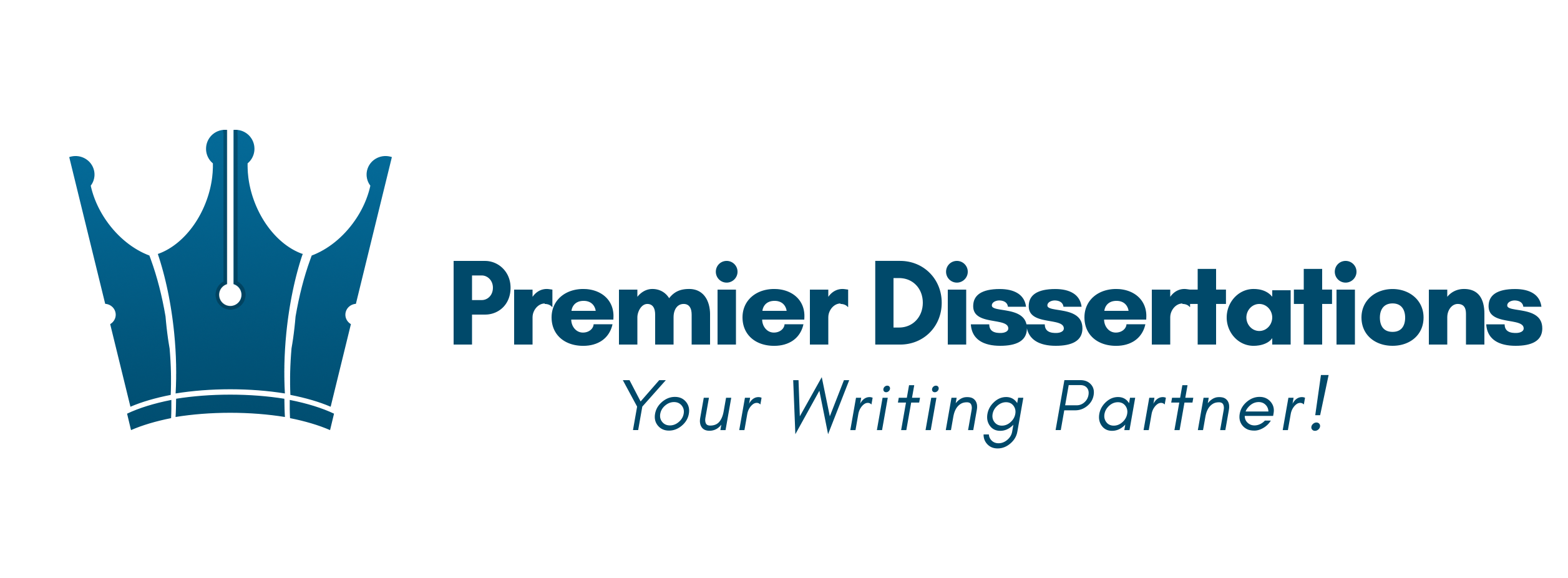



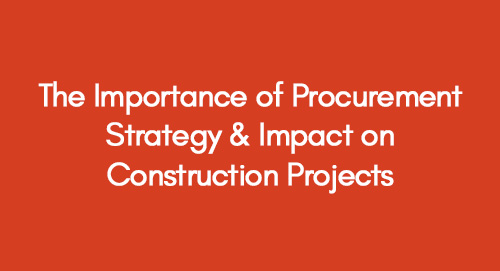
 Download PDF File (undergraduate dissertation example)
Download PDF File (undergraduate dissertation example)

